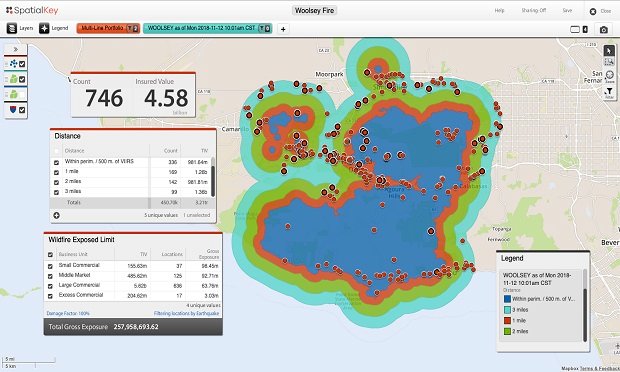 As an
insurance company executive, you've just emerged from one of the
most disruptive market shifts in recent memory. You're under
pressure from your customers and sales channels to provide
competitive products at the best prices; from government bodies to
comply with ever-shifting regulations; and from your shareholders
to consistently turn a profit. All of these stakeholders are
clamoring for information. Sales channels want to know which
products are selling well, regulators want audits, and shareholders
want to be kept informed about the state of the business.
As an
insurance company executive, you've just emerged from one of the
most disruptive market shifts in recent memory. You're under
pressure from your customers and sales channels to provide
competitive products at the best prices; from government bodies to
comply with ever-shifting regulations; and from your shareholders
to consistently turn a profit. All of these stakeholders are
clamoring for information. Sales channels want to know which
products are selling well, regulators want audits, and shareholders
want to be kept informed about the state of the business.
It's this demand for immediate, accurate information that is driving the current interest in business intelligence (BI) solutions.
Most insurance executives understand the value of BI. They agree that it can help them make smarter business decisions that will ultimately put their companies in the best possible competitive position. Yet, in the insurance industry, BI has historically been as much of a pain point as it is a solution. Many insurers lack the expertise, time and strategic business requirements for the data warehouse and subsequent analytics projects, especially when multiple lines of business are involved. In general, it takes a long time to get insurance BI projects off the ground–two years is not uncommon.
A new approach is showing promise, however, in shortening those timelines from years to months. This "adaptive data modeling" approach automates many aspects of the BI process, while still providing the business insight that insurance executives are seeking.
The BI Development Quandary
Creating, maintaining, and loading a data warehouse and BI environment is a circular process. Business analysts define the business requirements and pass them onto IT. The IT department then models the organization of the data and moves the data through the model (extract, transform and load, or ETL). Each constituency gets involved in building the reports in an often complex and laborious process. Overall, the multitude of steps and the large number of people involved creates a "BI development quandary" that places time and cost constraints on multi-department analytic projects.

Figure 1: The "BI Development Quandary"
Data projects are expensive in time and money and often reduce enterprise agility as they become another static layer in the enterprise architecture. If the insurer wants to make any additions or changes, such as adding in new products and covered risks, it costs additional money and time.
Adaptive Data Modeling: Doing BI Differently
The traditional approach as described in the "BI development quandary" leads to BI strategies taking two to four years or more to get off the ground. Adaptive data modeling takes a different approach.
In adaptive data modeling, the configuration and creation of certain parts of the warehouse–interfaces, ETL, data model, analytics, etc.–is automated. Line-of-business risk items are controlled by business users, eliminating the circular process outlined above. The IT department has complete flexibility to scale the application appropriately, removing traditional modeling constraints. Business users also manage custom modeling, while internal ETL build-out is auto-generated by the warehouse system.
In this scenario, insurers benefit from an out-of-the-box, insurance-specific solution that can be easily configured and re-configured as business requirements change. They can change the way they view the data, adding or changing data elements whenever the need arises. Auto generating database structures, warehouse ETL, and data mart ETL not only simplifies the BI development process, but reduces the number of constituents and, in turn, reduces the chance of human error.
Automating in this fashion can reduce the resources that an insurer's IT and business staff must allocate to support BI capabilities–which in turn would reduce the total cost of ownership.
Which parts of the BI process lend themselves best to adaptive data modeling? BI providers should include data models, a robust set of templates for both senior and first line managers, intuitive tools for customizing reports and creating new reports, and a smart report portfolio management tool that automatically provides feedback to each user on the frequency with which various reports are seen and used. The ability of trained business users to configure the model, beyond what the application offers out of the box, can also add value to insurers.
Adaptive Approach Brings Benefits
The ability to add new lines of business or distribution networks to the enterprise analytics model is critical to insurers. Instead of having to go through and touch every part of the BI process–data models, ETL, etc.–to make the changes, users can look at a new information requirement, define it in one place, and it will be available in all other places. Advances in business process modeling tools enable rapid creation and modification of processes that outpace the speed of changes in the data warehouse. This new kind of adaptive data modeling lets insurers maintain the vital connection between enterprise processes and enterprise data.

Figure 2: Timelines for traditional BI projects vs. Adaptive Data Modeling
Overall, adaptive data modeling offers multiple benefits to those who utilize this approach. The benefits include:
- Lower cost of ownership with quicker initial implementation
- Faster time to information and better reporting
- The ability to adapt to changing business requirements and market conditions rapidly and easily
- Continuous audit trails with the ability to do real-time audits
How to Get Started
Clearly, the adaptive approach to data modeling offers significant advantages over existing practices, but how can insurance organizations take advantage of this methodology without building it from scratch? Oracle Insurance has devoted significant research and development (R&D) to this issue, developing product line enhancements that will provide just the sort of adaptive data modeling that benefits insurers most.
Oracle has found that property and casualty (P&C) insurers' systems and business models are 80 percent the same across basic functions such as writing premiums, managing claims, etc. The "secret sauce" that is different from insurer to insurer from a data perspective is how they define the insured items and the relationships therein. Understanding this has enabled Oracle to create a data model, Oracle Insurance Insight, which addresses 80 percent of what is core to every insurer–while leaving the other 20 percent easily configurable and definable around risk items.
Oracle's overall strategy is one of modularization and flexibility, giving business users the ability to configure the application as needed. Until recently, no one in the data warehouse world has successfully modularized the build-out of a vertical business intelligence and warehousing application. Taking the point one step further, no one has put the configuration of a warehouse into the hands of a business user. By empowering business users in this way, insurers can significantly reduce the amount of time and effort required to implement and maintain BI projects.
Conclusion
Adaptive data modeling is an entirely new approach that automates as many parts of the BI process as possible, while being flexible enough to let business users easily configure those areas which are specific to each insurer. In this way, insurers can reduce the time and effort involved in BI projects while enabling faster–and better–business decisions. They can gain the insight they seek in order to make better choices that will satisfy their stakeholders, bolster their bottom lines and help them outpace the competition.
Want to continue reading?
Become a Free PropertyCasualty360 Digital Reader
Your access to unlimited PropertyCasualty360 content isn’t changing.
Once you are an ALM digital member, you’ll receive:
- All PropertyCasualty360.com news coverage, best practices, and in-depth analysis.
- Educational webcasts, resources from industry leaders, and informative newsletters.
- Other award-winning websites including BenefitsPRO.com and ThinkAdvisor.com.
Already have an account? Sign In
© 2024 ALM Global, LLC, All Rights Reserved. Request academic re-use from www.copyright.com. All other uses, submit a request to [email protected]. For more information visit Asset & Logo Licensing.








